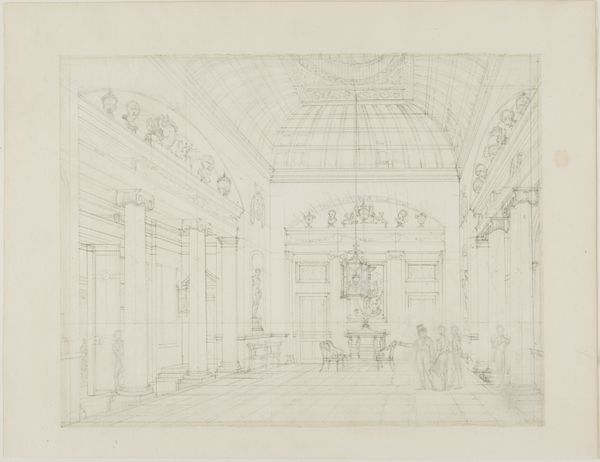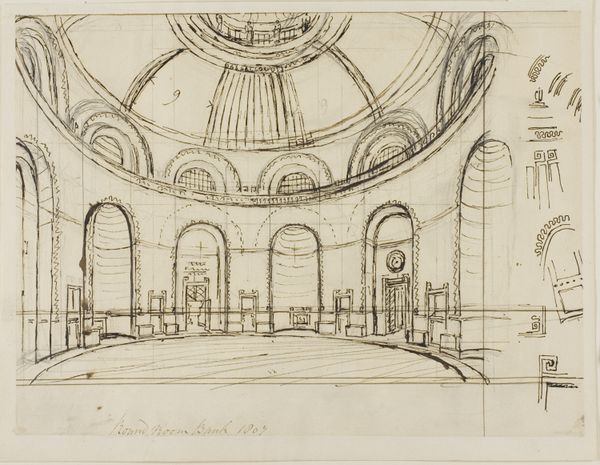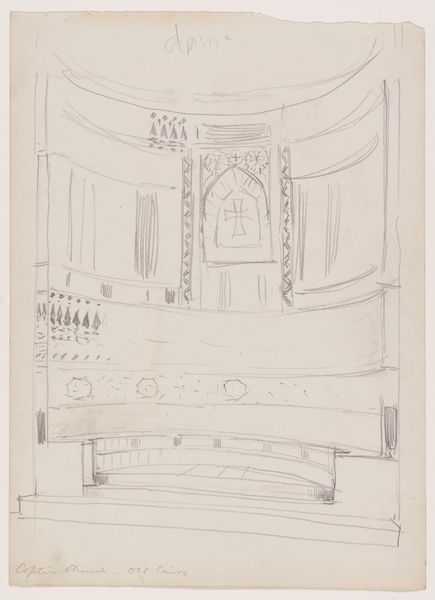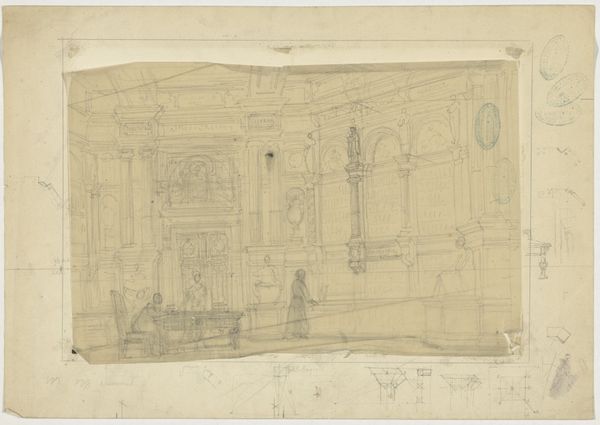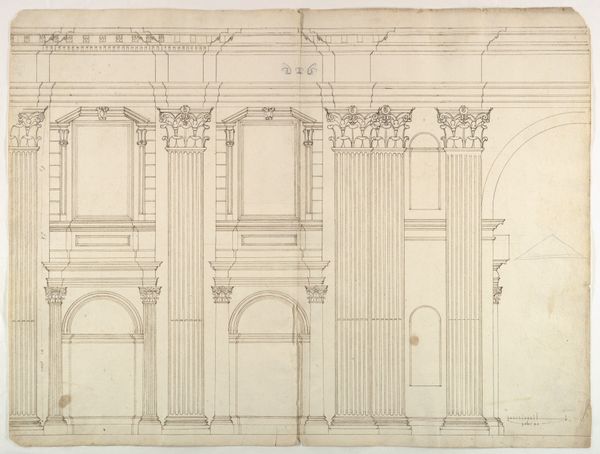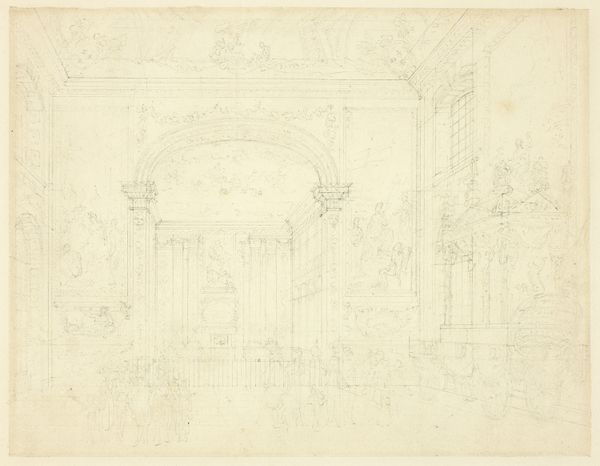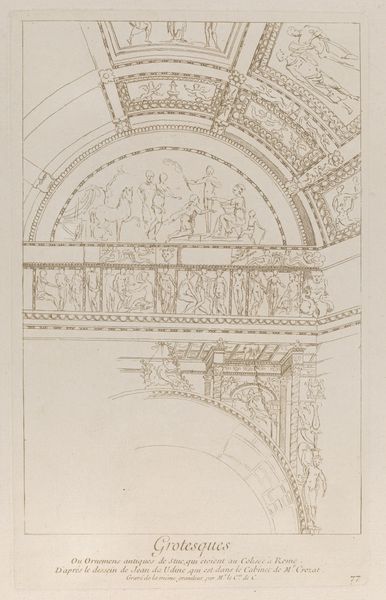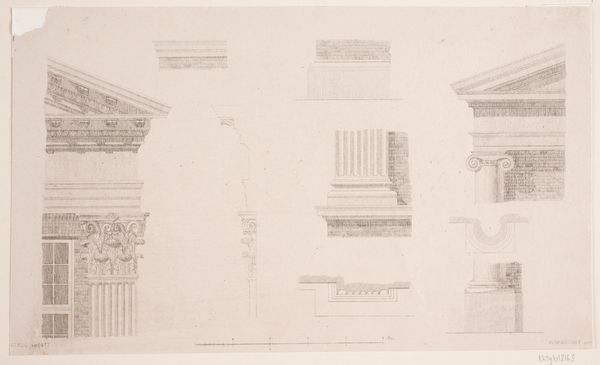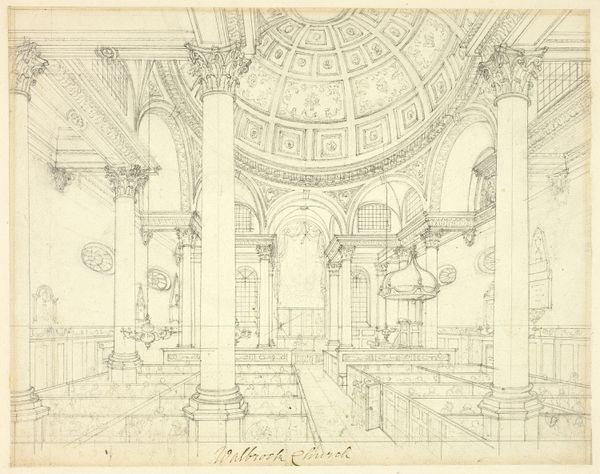
drawing, print, etching, paper, ink, pencil, engraving, architecture
#
drawing
#
neoclacissism
# print
#
etching
#
etching
#
paper
#
ink
#
pencil
#
engraving
#
architecture
Dimensions: 229 mm (height) x 330 mm (width) (bladmaal), 213 mm (height) x 313 mm (width) (plademaal)
Curator: G.F. Hetsch created this print titled "Antik gravhv\u00e6lving" in 1819, currently housed here at the SMK. Editor: An etching... there’s such cool precision to this method. It immediately gives the whole scene a sense of quietude. Look how linear it is; the columns, stairs, even the patterned ceiling – such formality. Curator: Formality is key, absolutely. As the title suggests, this rendering references an ancient burial vault, or perhaps even a tomb. Notice the inscriptions above what appears to be sarcophagi; funerary architecture and monuments were often adorned with didactic text meant to immortalize the dead, or to address future readers of the inscription. Editor: I see, yes... the deliberate use of Latin, no doubt. The overall layout, though, it really guides the eye upwards along the staircase. I'm curious how Hetsch handles spatial depth simply through linear gradations; it’s so controlled. Curator: Neoclassical interests were in full bloom at this time. Hetsch looks back to a perceived golden age of balanced architecture and, dare I say, social order. These constructed interior spaces signify much more than places to bury the dead. They can represent concepts of civic virtue and enduring societal values. It’s a re-engagement with values thought to be foundational. Editor: So it's like a visual code. It borrows motifs and structure from the ancient world. What about those figures atop the staircase? They almost seem an afterthought to the precision found in the architectural layout. Curator: They introduce narrative. One must ask: Are they visitors? Mourners? Their small presence emphasizes the tomb’s scale, while suggesting its continuous role as a site of memory and connection. Even in death, culture perpetuates itself. Editor: I suppose even that limited human presence can serve to disrupt the stasis – that eternal “now” imposed by neoclassical rigidity – with a suggestion of change or impermanence. Curator: Indeed. Etchings and engravings can reveal not only meticulous surfaces, but also those haunting, symbolic layers. Thank you for engaging this wonderful architectural exercise with me. Editor: Thank you. It is ever illuminating to examine these historical reflections refracted by artmaking.
Comments
No comments
Be the first to comment and join the conversation on the ultimate creative platform.
